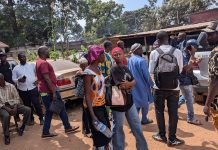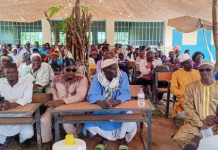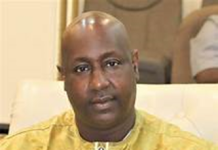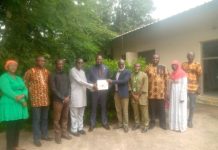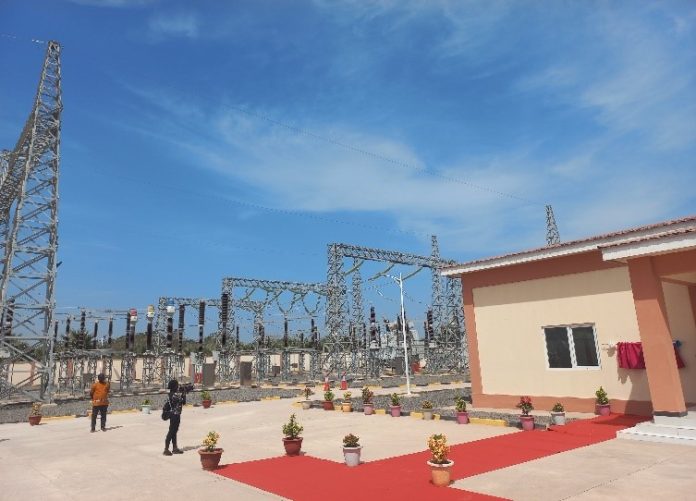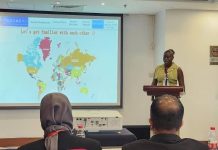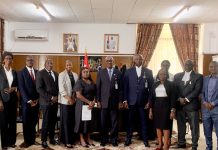By Assan Bah
President Adama Barrow officially inaugurated the Transmission and Distribution Modernization Facility on Thursday, February 20, 2025, a cornerstone of the Gambia Electricity Restoration and Modernization Project (GERMP). This initiative, spearheaded by the Ministry of Petroleum, Energy and Mines, and the National Water and Electricity Company (NAWEC), has been made possible through financial support from the World Bank (WB), the European Union (EU), and the European Investment Bank (EIB).
The GERMP aims to modernize the Gambia’s power transmission infrastructure, enhance the efficiency of electricity distribution, and provide a more stable supply of power, particularly benefiting the Greater Banjul Area (GBA). The project includes a number of key components, including an 18km 225kV transmission line from Brikama to Jabang, a national control center, a 225/33kV substation in Jabang, six new 33kV medium-voltage lines, and the rehabilitation of 52 secondary substations.
Ousman Bojang, the Governor of the West Coast Region (WCR), expressed gratitude to the government, noting that the region is home to nearly half of the country’s population, according to the most recent census. He emphasized that the GERMP project would alleviate the energy pressures faced by the area’s growing population and assured residents that any issues related to the high-voltage lines would be addressed and that protection from illegal encroachment would be ensured.
Representatives from the European Investment Bank (EIB) also commended the project. Mr. Rogers Steward, an EIB representative, reaffirmed the bank’s commitment to supporting the Gambia’s development goals. He described the GERMP as a vital component in the country’s pursuit of energy independence, stability, and economic growth, pointing out that the modernization would reduce energy losses and foster job creation and economic activity.
“The project will enhance the electricity backbone of the Gambia, benefiting communities across the country,” he said. “It will provide opportunities for quality education and greater economic activity through reliable energy access.”
World Bank Country Director Ms. Keiko Miwa echoed this sentiment, highlighting the significant strides the project represents in transforming NAWEC into a modern, 21st-century utility. She emphasized that the project would reduce transmission losses and curb frequent power outages, positioning the Gambia to be among the first nations in the region to achieve universal energy access.
Her Excellency Immaculada Roca I Cortés, the Ambassador of the European Union to the Gambia, also underscored the EU’s strong financial backing for the GERMP project, contributing EUR 105 million to its success. She noted that more than 800,000 Gambians would benefit from the improvements, with reliable energy reaching thousands of schools and health centers across the country.
In his keynote address, President Barrow highlighted the project’s historical significance, calling it a key milestone in the country’s energy transformation. He noted that the Gambia had long struggled with an outdated power transmission network, but with the project’s completion, the country’s grid would be upgraded from 33kV to 225kV, and a national control center would be established for the first time in the nation’s history.
“The Gambia’s power supply system is being transformed from an analogue to a digital system, ensuring greater resilience, efficiency, and enhanced communication,” Barrow said. He also stressed that the project would lay the foundation for the interconnection of the Gambia’s grid with the OMVG power transmission network, eventually linking it to the broader West African power pool.
President Barrow expressed his gratitude to the European Union, the World Bank, and the European Investment Bank for their instrumental support in realizing the project. He noted that the GERMP is not only a major step forward in improving the nation’s energy infrastructure but also a reflection of the government’s ongoing commitment to modernizing and expanding the country’s power sector.
With the completion of this project, the Gambia is poised for a more reliable and robust electricity grid.
